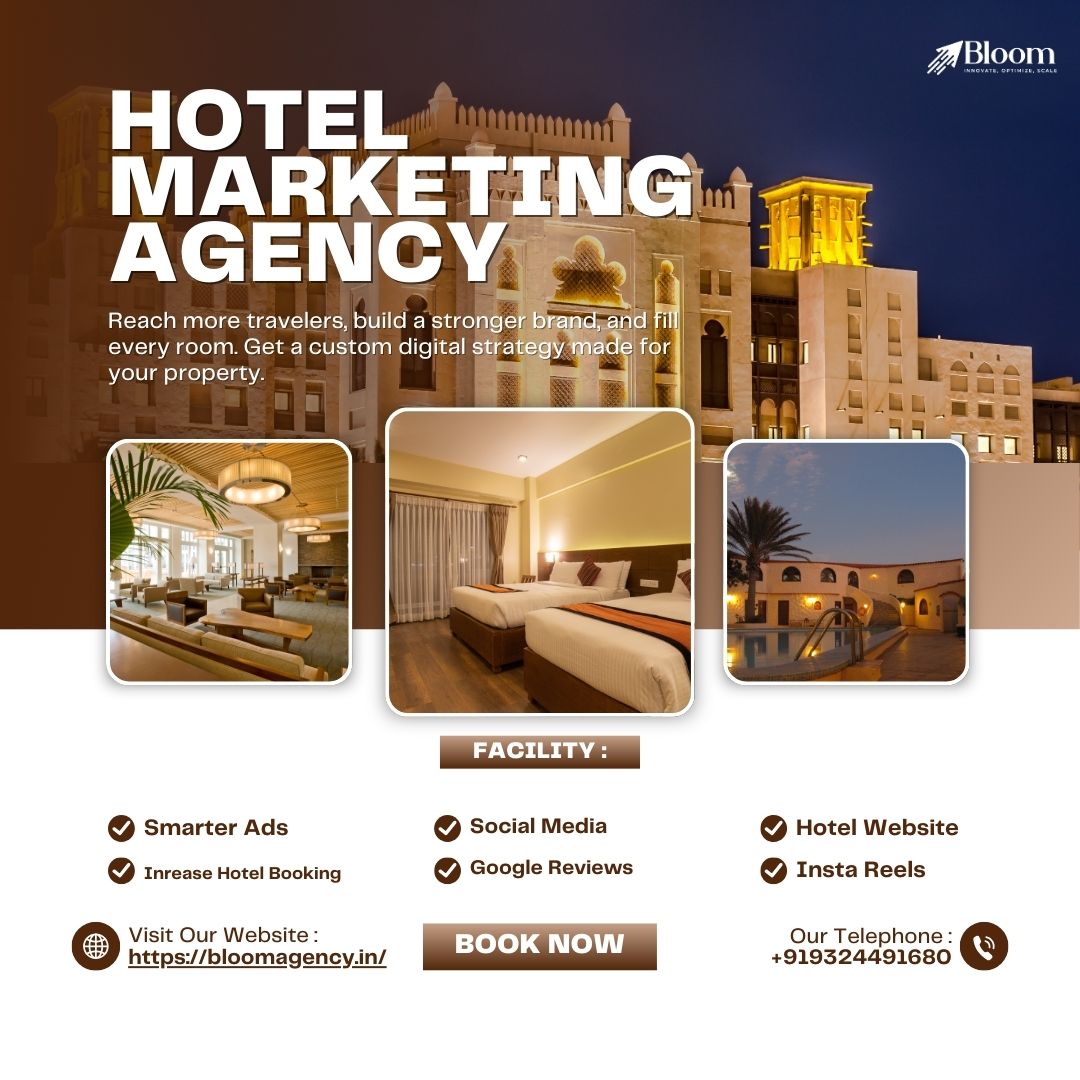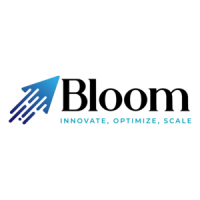Graphic Design and Hotel Marketing: Crafting Memorable Guest Experiences

Strong 8k brings an ultra-HD IPTV experience to your living room and your pocket.
Graphic Design and Hotel Marketing: Crafting Memorable Guest Experiences
In the age of digitally focused hospitality, hotels are no longer mere accommodations—now they're brands vying for attention, loyalty, and reservations. As travel becomes ever more experiential, guests want more than amenities; they want brands that speak to their tastes, values, and aspirations. That's where graphic design and marketing power comes into play. Together, they create a powerful toolkit that enables hotels to tell their story, influence perceptions, and attract visitors in a competitive marketplace.
This article explores how combined graphic and marketing strategies can raise the profile of a hotel, increase customer interaction, and ultimately drive bookings and revenue.
Why Branding Matters in the Hospitality Industry
In hospitality, image is everything. Whatever the size of your property, from a boutique hotel to an international chain, visual identity—logos, colors, typography, imagery—is quite likely to be the initial contact point a visitor has with your property.
Consistency Builds Trust
A unified brand identity, echoed across your website, booking sites, brochures, and in-property signage, engenders trustworthiness and professionalism.
Branding Affects Perception
Design elements affect how your hotel is viewed—luxurious, affordable, eco-friendly, family-friendly, or romantic. Correct branding guarantees that you're targeting the correct target market.
Emotional Connection Drives Loyalty
Design isn't merely a matter of aesthetics; it's an emotional response. Visual storytelling through design will help to invoke the right emotional response, generating more bookings and repeat visits.
Graphic Design Essentials for Hotels
A hotel's visual identity does not need to be just about a beautiful-looking logo. The following are reasons why graphic design is vital for hotel marketing:
1. Logo and Brand Identity
Your logo should reflect the character of your hotel. It should be scalable (from a favicon on a website to a giant outdoor sign) and printable as well as digital-friendly. A brand identity guide should establish colors, fonts, tone, and image style so that everything is consistent.
2. Website Design
A clear, mobile-friendly, and beautiful website is critical. The design should:
Mirror your hotel's atmosphere and personality
Include high-quality images and videos
Provide smooth navigation and booking capabilities
Employ design psychology to nudge users toward conversion (booking)
3. Print Materials
From brochures and business cards to in-room dining menus and welcome guides, your printed materials must feel like an organic extension of your hotel's environment.
4. Signage and Wayfinding
Well-designed, clear signage enriches the guest experience by simplifying navigation. Consistent branding across physical touchpoints enhances the guest's overall impression.
5. Social Media Graphics
On social media platforms such as Facebook and Instagram, visual appeal and image quality can have a direct influence on engagement. Professionally designed and consistent templates give your online presence a boost.
Successful Marketing Strategies for Hotels
1. Search Engine Optimization (SEO)
Ranking high in search engines allows you to capture organic traffic from tourists. SEO strategies involve:
Improving website speed and mobile-friendliness
Employing geo-targeted keywords (e.g., "luxury hotel in Goa")
Developing destination-specific content such as travel blogs or event guides
2. Pay-Per-Click (PPC) Advertising
Google Ads and Meta Ads (Facebook, Instagram) are strong means to target certain demographics with booking intent. You can advertise special deals, holiday packages, or feature amenities.
3. Email Marketing
Automated email marketing assists in lead nurturing and top-of-mind awareness. Examples include:
Welcome emails for new subscribers
Birthday or anniversary discount offers
Post-stay feedback requests
4. Content Marketing
Hotels blogging about local events, travel tips, and cultural events position themselves as useful resources, enhancing SEO and guest trust.
5. Influencer and Affiliate Marketing
Collaboration with travel influencers or bloggers can bring social validation and access to new audiences. Select influencers whose values match your brand.
Integrated Design + Marketing: The Power Combo
When graphic design and marketing efforts are integrated, the outcomes are powerful. Here's how integration occurs:
Marketing Element\tAssisting Graphic Design
Social Media Campaign\tBranded graphics, story templates, highlight covers
Email Newsletter\tWell-designed headers, promotional banners
SEO Landing Pages\tCustom infographics, hotel room icons
Google Ads\tHigh-converting display graphics for ads
Event Promotions\tPosters, flyers, online event banners
Example: A boutique hotel introduces a "Romantic Weekend Getaway" package. The marketing department designs a campaign strategy to approach couples living in metro cities. At the same time, the graphic design team works on:
Refined email banners
Instagram story sets
Landing page design
In-room welcome cards for reserved guests
The outcome? Coordinated brand experience from initial impression to post-stay interaction.
Case Study: The Power of Rebranding
Hotel Nirvana, Jaipur
Challenge: With great reviews, this boutique hotel had low brand recall and no identity that reflected its heritage architecture and artful interiors.
Solution:
Graphic Design: Bloom Agency redesigned the logo with Rajasthani patterns and selected a majestic color scheme of maroon and gold. New signage, business cards, and branded amenities (bathrobes, slippers, door hangers) were designed.
Marketing: SEO was enhanced with Jaipur attractions content. A "Live Like Royalty" ad campaign was initiated, appealing to millennial travelers on Instagram and Google.
Results:
60% increase in direct bookings within 6 months
45% increased engagement on social media
Better average length of stay and guest satisfaction
Typical Blunders Hotels Should Steer Clear Of
Inconsistent Branding
Employing various logos, fonts, and colors on channels confuses the customer and dilutes your brand.
Disregarding Mobile Experience
More than 60% of travel bookings happen on mobile. Subpar mobile UI results in high bounce rates and dropped bookings.
Generic Marketing
Copy-pasting what other hotels are doing won't cut it. Tailor campaigns according to your location, audience, and individual strengths.
Neglect of Visual Hierarchy
Menus, brochures, and websites must have clear design. Bad design = too much information.
Not Spending on Expert Assistance
Most amateurish efforts result from homemade marketing and designing. Spending money on experts is time-saving, minimizes errors, and maximizes ROI.
How Bloom Agency Can Assist Hotels in Expansion
At Bloom Agency, we provide expertise in marrying gorgeous graphics with goal-oriented marketing for hospitality companies. Our specialized hotel services include:
Creation of Brand Identity: Custom logos, brand guidelines, and signage
Web Development & Design: SEO-friendly, mobile-responsive booking websites
Social Media Management: Creation and implementation of recurring content schedules
PPC and Meta Ads: Campaign installation, ad copy, and targeting audience
Print Design: Brochures, business cards, flyers, menus
Email Campaigns: Design and automation
Our clientele consists of boutique hotels, luxury hotels, eco-lodges, and urban business hotels in India and the Middle East.
Conclusion: Design and Marketing as a Business Asset
Marketing and graphic design aren't creative afterthoughts—they're essential components of any hotel looking to expand, differentiate itself, and attract loyal returnees. With a saturated hospitality landscape, effective visual brand execution and clever digital marketing can be the determining factor in a guest's decision to book you or someone else.
If you're prepared to take your hotel's brand and reservations to the next level, look to join forces with an agency that knows hospitality from the ground up.
Looking to reinvent your hotel's brand and online presence?
Contact Bloom Agency or reach out for a complimentary branding and marketing consultation. In the age of digitally focused hospitality, hotels are no longer mere accommodations—now they're brands vying for attention, loyalty, and reservations. As travel becomes ever more experiential, guests want more than amenities; they want brands that speak to their tastes, values, and aspirations. That's where graphic design and marketing power comes into play. Together, they create a powerful toolkit that enables hotels to tell their story, influence perceptions, and attract visitors in a competitive marketplace.
This article explores how combined graphic and marketing strategies can raise the profile of a hotel, increase customer interaction, and ultimately drive bookings and revenue.
Why Branding Matters in the Hospitality Industry
In hospitality, image is everything. Whatever the size of your property, from a boutique hotel to an international chain, visual identity—logos, colors, typography, imagery—is quite likely to be the initial contact point a visitor has with your property.
Consistency Builds Trust
A unified brand identity, echoed across your website, booking sites, brochures, and in-property signage, engenders trustworthiness and professionalism.
Branding Affects Perception
Design elements affect how your hotel is viewed—luxurious, affordable, eco-friendly, family-friendly, or romantic. Correct branding guarantees that you're targeting the correct target market.
Emotional Connection Drives Loyalty
Design isn't merely a matter of aesthetics; it's an emotional response. Visual storytelling through design will help to invoke the right emotional response, generating more bookings and repeat visits.
Graphic Design Essentials for Hotels
A hotel's visual identity does not need to be just about a beautiful-looking logo. The following are reasons why graphic design is vital for hotel marketing:
1. Logo and Brand Identity
Your logo should reflect the character of your hotel. It should be scalable (from a favicon on a website to a giant outdoor sign) and printable as well as digital-friendly. A brand identity guide should establish colors, fonts, tone, and image style so that everything is consistent.
2. Website Design
A clear, mobile-friendly, and beautiful website is critical. The design should:
Mirror your hotel's atmosphere and personality
Include high-quality images and videos
Provide smooth navigation and booking capabilities
Employ design psychology to nudge users toward conversion (booking)
3. Print Materials
From brochures and business cards to in-room dining menus and welcome guides, your printed materials must feel like an organic extension of your hotel's environment.
4. Signage and Wayfinding
Well-designed, clear signage enriches the guest experience by simplifying navigation. Consistent branding across physical touchpoints enhances the guest's overall impression.
5. Social Media Graphics
On social media platforms such as Facebook and Instagram, visual appeal and image quality can have a direct influence on engagement. Professionally designed and consistent templates give your online presence a boost.
Successful Marketing Strategies for Hotels
1. Search Engine Optimization (SEO)
Ranking high in search engines allows you to capture organic traffic from tourists. SEO strategies involve:
Improving website speed and mobile-friendliness
Employing geo-targeted keywords (e.g., "luxury hotel in Goa")
Developing destination-specific content such as travel blogs or event guides
2. Pay-Per-Click (PPC) Advertising
Google Ads and Meta Ads (Facebook, Instagram) are strong means to target certain demographics with booking intent. You can advertise special deals, holiday packages, or feature amenities.
3. Email Marketing
Automated email marketing assists in lead nurturing and top-of-mind awareness. Examples include:
Welcome emails for new subscribers
Birthday or anniversary discount offers
Post-stay feedback requests
4. Content Marketing
Hotels blogging about local events, travel tips, and cultural events position themselves as useful resources, enhancing SEO and guest trust.
5. Influencer and Affiliate Marketing
Collaboration with travel influencers or bloggers can bring social validation and access to new audiences. Select influencers whose values match your brand.
Integrated Design + Marketing: The Power Combo
When graphic design and marketing efforts are integrated, the outcomes are powerful. Here's how integration occurs:
Marketing Element\tAssisting Graphic Design
Social Media Campaign\tBranded graphics, story templates, highlight covers
Email Newsletter\tWell-designed headers, promotional banners
SEO Landing Pages\tCustom infographics, hotel room icons
Google Ads\tHigh-converting display graphics for ads
Event Promotions\tPosters, flyers, online event banners
Example: A boutique hotel introduces a "Romantic Weekend Getaway" package. The marketing department designs a campaign strategy to approach couples living in metro cities. At the same time, the graphic design team works on:
Refined email banners
Instagram story sets
Landing page design
In-room welcome cards for reserved guests
The outcome? Coordinated brand experience from initial impression to post-stay interaction.
Case Study: The Power of Rebranding
Hotel Nirvana, Jaipur
Challenge: With great reviews, this boutique hotel had low brand recall and no identity that reflected its heritage architecture and artful interiors.
Solution:
Graphic Design: Bloom Agency redesigned the logo with Rajasthani patterns and selected a majestic color scheme of maroon and gold. New signage, business cards, and branded amenities (bathrobes, slippers, door hangers) were designed.
Marketing: SEO was enhanced with Jaipur attractions content. A "Live Like Royalty" ad campaign was initiated, appealing to millennial travelers on Instagram and Google.
Results:
60% increase in direct bookings within 6 months
45% increased engagement on social media
Better average length of stay and guest satisfaction
Typical Blunders Hotels Should Steer Clear Of
Inconsistent Branding
Employing various logos, fonts, and colors on channels confuses the customer and dilutes your brand.
Disregarding Mobile Experience
More than 60% of travel bookings happen on mobile. Subpar mobile UI results in high bounce rates and dropped bookings.
Generic Marketing
Copy-pasting what other hotels are doing won't cut it. Tailor campaigns according to your location, audience, and individual strengths.
Neglect of Visual Hierarchy
Menus, brochures, and websites must have clear design. Bad design = too much information.
Not Spending on Expert Assistance
Most amateurish efforts result from homemade marketing and designing. Spending money on experts is time-saving, minimizes errors, and maximizes ROI.
How Bloom Agency Can Assist Hotels in Expansion
At Bloom Agency, we provide expertise in marrying gorgeous graphics with goal-oriented marketing for hospitality companies. Our specialized hotel services include:
Creation of Brand Identity: Custom logos, brand guidelines, and signage
Web Development & Design: SEO-friendly, mobile-responsive booking websites
Social Media Management: Creation and implementation of recurring content schedules
PPC and Meta Ads: Campaign installation, ad copy, and targeting audience
Print Design: Brochures, business cards, flyers, menus
Email Campaigns: Design and automation
Our clientele consists of boutique hotels, luxury hotels, eco-lodges, and urban business hotels in India and the Middle East.
Conclusion: Design and Marketing as a Business Asset
Marketing and graphic design aren't creative afterthoughts—they're essential components of any hotel looking to expand, differentiate itself, and attract loyal returnees. With a saturated hospitality landscape, effective visual brand execution and clever digital marketing can be the determining factor in a guest's decision to book you or someone else.
If you're prepared to take your hotel's brand and reservations to the next level, look to join forces with an agency that knows hospitality from the ground up.
Looking to reinvent your hotel's brand and online presence?
Contact Bloom Agency or reach out for a complimentary branding and marketing consultation. In the age of digitally focused hospitality, hotels are no longer mere accommodations—now they're brands vying for attention, loyalty, and reservations. As travel becomes ever more experiential, guests want more than amenities; they want brands that speak to their tastes, values, and aspirations. That's where graphic design and marketing power comes into play. Together, they create a powerful toolkit that enables hotels to tell their story, influence perceptions, and attract visitors in a competitive marketplace.
This article explores how combined graphic and marketing strategies can raise the profile of a hotel, increase customer interaction, and ultimately drive bookings and revenue.
Why Branding Matters in the Hospitality Industry
In hospitality, image is everything. Whatever the size of your property, from a boutique hotel to an international chain, visual identity—logos, colors, typography, imagery—is quite likely to be the initial contact point a visitor has with your property.
Consistency Builds Trust
A unified brand identity, echoed across your website, booking sites, brochures, and in-property signage, engenders trustworthiness and professionalism.
Branding Affects Perception
Design elements affect how your hotel is viewed—luxurious, affordable, eco-friendly, family-friendly, or romantic. Correct branding guarantees that you're targeting the correct target market.
Emotional Connection Drives Loyalty
Design isn't merely a matter of aesthetics; it's an emotional response. Visual storytelling through design will help to invoke the right emotional response, generating more bookings and repeat visits.
Graphic Design Essentials for Hotels
A hotel's visual identity does not need to be just about a beautiful-looking logo. The following are reasons why graphic design is vital for hotel marketing:
1. Logo and Brand Identity
Your logo should reflect the character of your hotel. It should be scalable (from a favicon on a website to a giant outdoor sign) and printable as well as digital-friendly. A brand identity guide should establish colors, fonts, tone, and image style so that everything is consistent.
2. Website Design
A clear, mobile-friendly, and beautiful website is critical. The design should:
Mirror your hotel's atmosphere and personality
Include high-quality images and videos
Provide smooth navigation and booking capabilities
Employ design psychology to nudge users toward conversion (booking)
3. Print Materials
From brochures and business cards to in-room dining menus and welcome guides, your printed materials must feel like an organic extension of your hotel's environment.
4. Signage and Wayfinding
Well-designed, clear signage enriches the guest experience by simplifying navigation. Consistent branding across physical touchpoints enhances the guest's overall impression.
5. Social Media Graphics
On social media platforms such as Facebook and Instagram, visual appeal and image quality can have a direct influence on engagement. Professionally designed and consistent templates give your online presence a boost.
Successful Marketing Strategies for Hotels
1. Search Engine Optimization (SEO)
Ranking high in search engines allows you to capture organic traffic from tourists. SEO strategies involve:
Improving website speed and mobile-friendliness
Employing geo-targeted keywords (e.g., "luxury hotel in Goa")
Developing destination-specific content such as travel blogs or event guides
2. Pay-Per-Click (PPC) Advertising
Google Ads and Meta Ads (Facebook, Instagram) are strong means to target certain demographics with booking intent. You can advertise special deals, holiday packages, or feature amenities.
3. Email Marketing
Automated email marketing assists in lead nurturing and top-of-mind awareness. Examples include:
Welcome emails for new subscribers
Birthday or anniversary discount offers
Post-stay feedback requests
4. Content Marketing
Hotels blogging about local events, travel tips, and cultural events position themselves as useful resources, enhancing SEO and guest trust.
5. Influencer and Affiliate Marketing
Collaboration with travel influencers or bloggers can bring social validation and access to new audiences. Select influencers whose values match your brand.
Integrated Design + Marketing: The Power Combo
When graphic design and marketing efforts are integrated, the outcomes are powerful. Here's how integration occurs:
Marketing Element\tAssisting Graphic Design
Social Media Campaign\tBranded graphics, story templates, highlight covers
Email Newsletter\tWell-designed headers, promotional banners
SEO Landing Pages\tCustom infographics, hotel room icons
Google Ads\tHigh-converting display graphics for ads
Event Promotions\tPosters, flyers, online event banners
Example: A boutique hotel introduces a "Romantic Weekend Getaway" package. The marketing department designs a campaign strategy to approach couples living in metro cities. At the same time, the graphic design team works on:
Refined email banners
Instagram story sets
Landing page design
In-room welcome cards for reserved guests
The outcome? Coordinated brand experience from initial impression to post-stay interaction.
Case Study: The Power of Rebranding
Hotel Nirvana, Jaipur
Challenge: With great reviews, this boutique hotel had low brand recall and no identity that reflected its heritage architecture and artful interiors.
Solution:
Graphic Design: Bloom Agency redesigned the logo with Rajasthani patterns and selected a majestic color scheme of maroon and gold. New signage, business cards, and branded amenities (bathrobes, slippers, door hangers) were designed.
Marketing: SEO was enhanced with Jaipur attractions content. A "Live Like Royalty" ad campaign was initiated, appealing to millennial travelers on Instagram and Google.
Results:
60% increase in direct bookings within 6 months
45% increased engagement on social media
Better average length of stay and guest satisfaction
Typical Blunders Hotels Should Steer Clear Of
Inconsistent Branding
Employing various logos, fonts, and colors on channels confuses the customer and dilutes your brand.
Disregarding Mobile Experience
More than 60% of travel bookings happen on mobile. Subpar mobile UI results in high bounce rates and dropped bookings.
Generic Marketing
Copy-pasting what other hotels are doing won't cut it. Tailor campaigns according to your location, audience, and individual strengths.
Neglect of Visual Hierarchy
Menus, brochures, and websites must have clear design. Bad design = too much information.
Not Spending on Expert Assistance
Most amateurish efforts result from homemade marketing and designing. Spending money on experts is time-saving, minimizes errors, and maximizes ROI.
How Bloom Agency Can Assist Hotels in Expansion
At Bloom Agency, we provide expertise in marrying gorgeous graphics with goal-oriented marketing for hospitality companies. Our specialized hotel services include:
Creation of Brand Identity: Custom logos, brand guidelines, and signage
Web Development & Design: SEO-friendly, mobile-responsive booking websites
Social Media Management: Creation and implementation of recurring content schedules
PPC and Meta Ads: Campaign installation, ad copy, and targeting audience
Print Design: Brochures, business cards, flyers, menus
Email Campaigns: Design and automation
Our clientele consists of boutique hotels, luxury hotels, eco-lodges, and urban business hotels in India and the Middle East.
Conclusion: Design and Marketing as a Business Asset
Marketing and graphic design aren't creative afterthoughts—they're essential components of any hotel looking to expand, differentiate itself, and attract loyal returnees. With a saturated hospitality landscape, effective visual brand execution and clever digital marketing can be the determining factor in a guest's decision to book you or someone else.
If you're prepared to take your hotel's brand and reservations to the next level, look to join forces with an agency that knows hospitality from the ground up.
Looking to reinvent your hotel's brand and online presence?
Contact Bloom Agency or reach out for a complimentary branding and marketing consultation.
Note: IndiBlogHub features both user-submitted and editorial content. We do not verify third-party contributions. Read our Disclaimer and Privacy Policyfor details.







